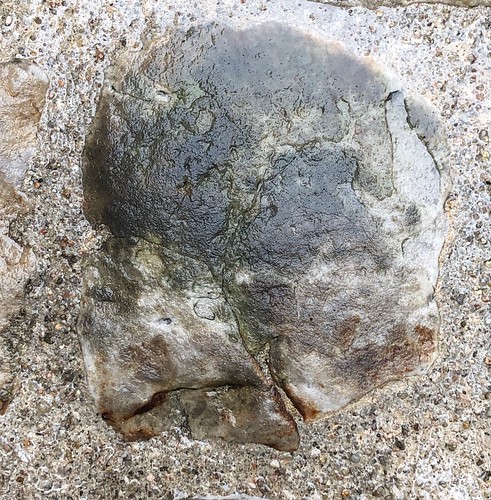R effective passive targeted therapy. This in the end results in elevated efficacy and safety of ND-based cancer therapy approaches (55). the sustained labeling of lung stem cells (LSCs) to track their engraftment and regenerative possible soon after lung Astringenin site tissue injury within a murine model (60). LSCs are essential mediators of epithelial tissue regeneration in vivo also as regulators of lung tissue homeostasis. Tracking LSCs, nonetheless, has been hard because of the photobleaching and toxicity observed with traditional agents, which can impede the differentiation capabilities or viability on the LSCs. A current study by Wu et al. has demonstrated stable tracking of LSC with fluorescent NDs, confirming LSC localization to the terminal bronchioles immediately after transplantation (Fig. 2B). The NDs have been excited by green-yellow light, along with the integration of negatively charged nitrogen-vacancy centers resulted in stable far-red emission at a 15-ns lifetime. Because conventional agents have fluorescent lifetimes in the range of 1 to four ns, ND fluorescence could be effortlessly differentiated from tissue autofluorescence employing fluorescence lifetime imaging microscopy (FLIM). LSCs were screened for the CD54 and CD157 markers to ensure their capacity for differentiation, and further studies confirmed that the cells were from a hematopoietic lineage. Fluorescent NDs incubated with CD45-CD54+CD157+ cells were readily endocytosed with no apparent exocytosis. Soon after tail-vein injection of the ND-containing LSCs, their engraftment and differentiation capabilities had been unimpaired, resulting in enhanced localization and epithelial regeneration at the sites of lung injury in comparison to saline control. This was an important advance because of the sustained LSC monitoring enabled by the photostability and biocompatibility PubMed ID:http://www.ncbi.nlm.nih.gov/pubmed/21310042 on the fluorescent NDs.ND-BASED IMAGINGNDs, both DND and FND, are also being broadly made use of for imaging applications. Every class of diamond has exclusive surface or structural options that markedly boost their functionality as imaging agents in comparison to clinical and nanoparticle requirements (Fig. 2) (569). Furthermore to the improvements in magnetic resonance  imaging mentioned in the introduction, a recent breakthrough making use of FNDs pertained toND-BASED DRUG DELIVERYND drug delivery has received important interest due to the facile nature of functionalizing their surfaces with drug compounds, specifically anthracyclines. The anthracycline class of compounds, which include things like doxorubicin, epirubicin, and daunorubicin, amongst other people, are potent DNA intercalating agents which are applied in most chemotherapy regimens. Despite the fact that anthracyclines have helpful anticancer activity, they’re also extremely toxic. They induce myelosuppression (that is the dose-limiting side impact of chemotherapy), mediate cardiotoxicity that could lead to heart failure, can cause superinfections, and may markedly raise the danger of creating acute myelogenous leukemia (61). Early studies successfully formulated ND-doxorubicin compounds (NDX) by means of physisorption, enabling potent drug binding and subsequent release with out the need to chemically modify the drug itself (62, 63). The NDX compound was subsequently validated in a broad array of cancer models that ranged from in vitro by way of preclinical in vivo models. Most notably, offered that the problem of drug resistance accounts for greater than 90 of tumor therapy failure in metastatic cancer, NDX was tested against two very drug-re.
imaging mentioned in the introduction, a recent breakthrough making use of FNDs pertained toND-BASED DRUG DELIVERYND drug delivery has received important interest due to the facile nature of functionalizing their surfaces with drug compounds, specifically anthracyclines. The anthracycline class of compounds, which include things like doxorubicin, epirubicin, and daunorubicin, amongst other people, are potent DNA intercalating agents which are applied in most chemotherapy regimens. Despite the fact that anthracyclines have helpful anticancer activity, they’re also extremely toxic. They induce myelosuppression (that is the dose-limiting side impact of chemotherapy), mediate cardiotoxicity that could lead to heart failure, can cause superinfections, and may markedly raise the danger of creating acute myelogenous leukemia (61). Early studies successfully formulated ND-doxorubicin compounds (NDX) by means of physisorption, enabling potent drug binding and subsequent release with out the need to chemically modify the drug itself (62, 63). The NDX compound was subsequently validated in a broad array of cancer models that ranged from in vitro by way of preclinical in vivo models. Most notably, offered that the problem of drug resistance accounts for greater than 90 of tumor therapy failure in metastatic cancer, NDX was tested against two very drug-re.
